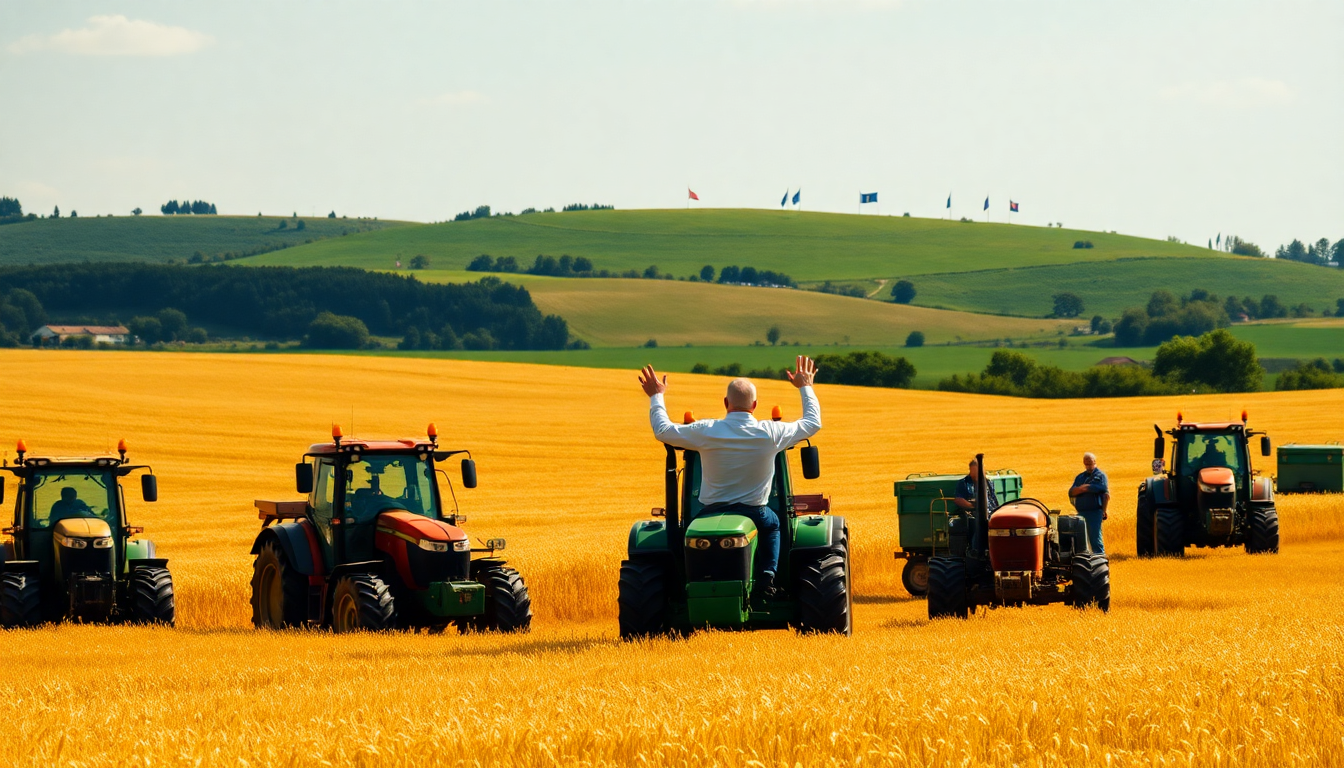Table of Contents
Recently, the European Commission found itself under considerable pressure as it navigated the implications of a staggering €30 billion-a-year repayment bill from its Covid-era borrowing. Among the bold ideas floated was the potential restructuring of the Common Agricultural Policy (CAP), a vital pillar of EU agricultural funding. But this proposal faced fierce backlash from farmers, ministers, and lobbyists alike, marking a crucial moment in the ongoing debate about agricultural funding in Europe. What does this mean for the future of farming on the continent?
Rethinking the CAP
The European Commission considered merging the CAP with cohesion funds into broader national budgets, similar to the pandemic-era Recovery and Resilience Facility. This would have given national governments more control over EU funds, allowing them to quickly redirect resources to urgent issues like defense and climate change. While officials pitched this plan as a flexible, streamlined approach, critics argued it threatened to dilute the CAP, a reliable source of funding for farmers since 1962. Could this shift jeopardize the very fabric of European agriculture?
As discussions heated up, opposition grew. Agricultural lobbyists rallied support, and ministers voiced their concerns passionately. In a telling move, Germany’s Christian Democratic Party contacted Commission President Ursula von der Leyen directly, urging her to safeguard the integrity of the CAP. This collective pushback highlighted the political clout of the agricultural sector, even as the number of farmers continues to dwindle. Why does this matter? Because it shows that farming remains a key concern in European politics.
Ultimately, the Commission backtracked on its initial plans. By June, it was evident that the CAP would retain its status as a distinct entity within the EU’s budget through the 2028-2034 period. Funding for rural development will also continue within the CAP’s two-pillar structure, effectively alleviating fears of a radical transformation. But is this truly a victory for farmers?
What it means for farmers across Europe
While the preservation of the CAP’s structure may seem like a win for agricultural advocates, the reality is quite nuanced. The looming repayment obligations from the pandemic mean that budget constraints are unavoidable. Early estimates suggest a possible reduction in CAP funding ranging from 15% to 25%, a cut that could have significant repercussions for farmers’ livelihoods. How will they cope with these changes?
Direct payments, crucial for many farmers, are also projected to decline. This situation raises serious concerns that financial support may not match the structural protections the CAP offers, potentially sparking protests reminiscent of those seen across Europe last year. Bernhard Krüsken, general secretary of the German Farmers’ Association, has stressed the necessity for a robust agricultural budget that meets contemporary challenges, cautioning against the dire implications that budget cuts could have on the future of European agriculture. What happens if those challenges aren’t met?
This tug-of-war between maintaining the CAP’s structure and addressing budgetary realities illustrates the complexities of EU budget politics. The failure to restructure the CAP highlights the difficulty of reallocating funds within the EU framework, where traditional alliances staunchly defend established policies. So, what does this say about the future of agricultural funding?
A complicated future for EU agricultural funding
The current political landscape suggests a compromise that leaves many stakeholders feeling dissatisfied. For agricultural groups, the promise of structural integrity without financial support offers little assurance in the face of impending funding cuts. On the flip side, those advocating for budget reform view the preservation of the CAP as a missed opportunity to strategically allocate resources. Is there a middle ground?
As the EU forges ahead, the challenge will be to balance the interests of farmers with the need for fiscal responsibility in an ever-evolving budgetary environment. The core issue remains: power in EU budget politics is not just about numbers but also about the coalitions that can be built and the lines drawn in the sand. The agricultural lobby has once again demonstrated its influence, reminding everyone involved of the CAP’s deep-rooted significance in European policy. How this will all unfold remains to be seen, but one thing is clear: the stakes for Europe’s farmers have never been higher.


